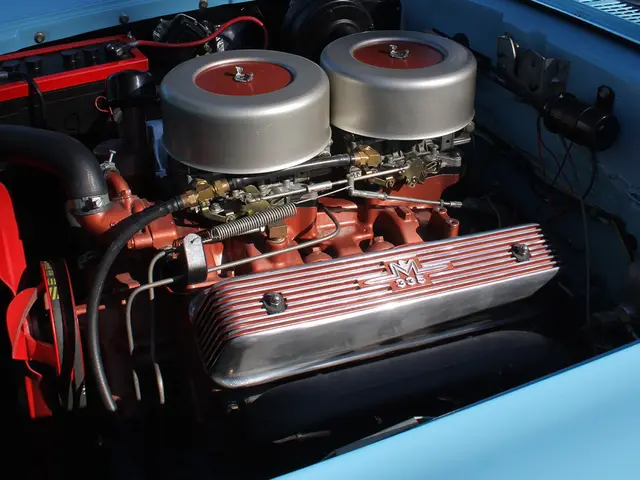Guide for Biomedical Engineers in Designing Energy-Efficient Hospitals
In the demanding world of healthcare facility design, energy efficiency presents a persistent challenge. Hospitals, consumed by vast energy demands similar to luxury hotels, up to five times more, call for a strict reevaluation of energy consumption. Given the hardships imposed on the healthcare sector in 2020 by the COVID-19 pandemic, economic sustainability has moved to the forefront. As a result, energy-efficient hospital design has evolved from a preference into an imperative.
Prioritizing energy efficiency transcends financial gains, promoting environmental preservation and elevating the comfort and well-being of both patients and staff. This feature article delves into the methods conducive to designing energy-efficient realities within hospitals, leveraging the latest studies and research in energy efficiency for healthcare buildings and offering practical guidance for healthcare engineers to implement these principles in design and retrofitting projects.
The Crucial Importance of Energy Efficiency in Hospital Design
Hospitals demand a continuous supply of energy to operate heating, ventilation, air conditioning (HVAC) systems, lighting, medical equipment, and numerous other appliances. This unrelenting energy consumption translates to increased operational costs and contributes to greenhouse gas emissions. Consequently, the urgency to construct energy-efficient hospitals demands attention for both financial and ecological sustainability.
The Pivotal Role of Healthcare Engineers in Design
Healthcare engineers hold the key to creating energy-efficient hospital designs, as they are tasked with integrating and managing the medical technologies that make up a considerable portion of a hospital's energy use. Through their specialized knowledge of medical equipment's energy needs, they can:
- Choose energy-efficient equipment with reduced power consumption without sacrificing performance or quality
- Implement procedures to guarantee efficient use of medical equipment—taking advantage of features like automatic shutoff when devices are not in use, and regularly scheduling maintenance for optimal performance
- Design systems that harmoniously integrate medical equipment with building layouts to minimize energy consumption. For example, engineering effective cooling and ventilation systems for labs and operating rooms
- Observe and analyze energy consumption using energy management systems to identify areas requiring improvement
Strategy for Energy-Efficient Hospital Design
Biomedical engineers and designers work together to make significant strides in cutting down energy consumption within hospitals by adopting innovative strategies. One such strategy involves optimizing HVAC systems—one of the largest energy consumers in healthcare facilities. This can be achieved by utilizing high-efficiency HVAC systems and implementing heat recovery systems that reuse wasted energy, as well as demand-controlled ventilation to prevent ventilating unoccupied spaces. Additional improvements include optimizing air duct design and using premium insulation materials to reduce energy loss.
When focusing on ventilation and air conditioning, lighting represents a vital aspect that is increased in efficiency by several methods. This is mainly accomplished by replacing conventional bulbs with LEDs, known for their efficiency, durability, and low energy consumption. Additionally, smart architectural design helps minimize dependency on artificial lighting by maximizing natural light during daytime. Moreover, motion sensors and lighting control devices can be installed to switch off lights in unoccupied areas, thereby effectively promoting energy conservation.
Beyond basic systems, attention should also be paid to the medical equipment itself. Purchasing energy-efficient medical equipment and implementing maintenance programs to ensure optimal performance with minimal energy consumption are essential steps towards achieving energy savings. Also, implementing clear guidelines for turning off equipment when not in use is a simple yet impactful action in reducing overall energy consumption.
Over the long term, designing sustainability into hospitals involves utilizing insulating building materials, energy-efficient windows, and designs that harness natural light effectively. This, along with the integration of renewable energy sources like solar panels and geothermal energy, and the implementation of smart energy management systems for monitoring and analyzing consumption contribute to the creation of more energy-efficient and sustainable hospitals.
Steps for Designing Energy-Efficient Hospitals
When designing or renovating hospitals with energy efficiency in mind, following a distinct process ensures success:
- Assessment of Current Infrastructure: Engineers should conduct a comprehensive evaluation of the existing healthcare facilities, encompassing HVAC and refrigeration systems, thermal insulation, lighting, and electrical equipment. This assessment serves as the first step in identifying weaknesses and strengths that can be improved to promote efficiency.
- Application of Dynamic Energy Modeling: By employing simulation and dynamic energy modeling software, engineers can visualize various energy-saving scenarios. Studying different alterations empowers designers to choose the best solutions that achieve energy savings without compromising patient comfort or operational efficiency.
- Adoption of AI Techniques: Using AI learning models for predicting and analyzing energy consumption is an innovative step. These models can detect patterns and influential factors, allowing systems to be fine-tuned according to different operating conditions, thereby achieving improved energy performance. This approach represents the future of energy-efficient hospital design, with models that can be regularly updated as environmental and operational conditions change.
- Improvement of Insulation and Windows: By enhancing glass and window technologies, energy-efficient hospital design is improved. Double-glazed window techniques, choosing heat-resistant glass types, and incorporating advanced materials can be implemented, enabling hospitals to benefit from natural light without negatively affecting the HVAC and refrigeration systems.
- Use of Advanced Lighting and Power Systems: Integrating modern lighting technologies, such as LED, lowers energy consumption. Furthermore, by implementing smart control systems that adjust lighting and climate levels according to the needs of the building and different times of the day, energy conservation can be significantly improved.
- To achieve energy efficiency in hospitals, healthcare engineers must prioritize medical equipment with reduced power consumption while maintaining performance and quality.
- Energy-efficient hospital designs can minimize energy consumption by designing systems that harmoniously integrate medical equipment with building layouts.
- Engineers can optimize HVAC systems by using high-efficiency HVAC systems, implementing heat recovery systems, and demand-controlled ventilation.
- LED lighting, which is efficient, durable, and low-energy, can significantly improve energy efficiency within hospitals.
- Smart architectural design can help minimize dependency on artificial lighting and maximize natural light during daytime.
- Motion sensors and lighting control devices can switch off lights in unoccupied areas, promoting energy conservation.
- Energy-efficient medical equipment and maintenance programs that ensure optimal performance with minimal energy consumption are essential steps towards achieving energy savings.
- Turning off equipment when not in use is a simple yet impactful action in reducing overall energy consumption within hospitals.
- Using insulating building materials, energy-efficient windows, and designs that harness natural light effectively can contribute to sustainable hospitals.
- Renewable energy sources like solar panels and geothermal energy, along with smart energy management systems for monitoring and analyzing consumption, can create more energy-efficient and sustainable hospitals.
- To design energy-efficient hospitals, following a distinct process that includes assessing the current infrastructure, applying dynamic energy modeling, adopting AI techniques, improving insulation and windows, and using advanced lighting and power systems is essential.








